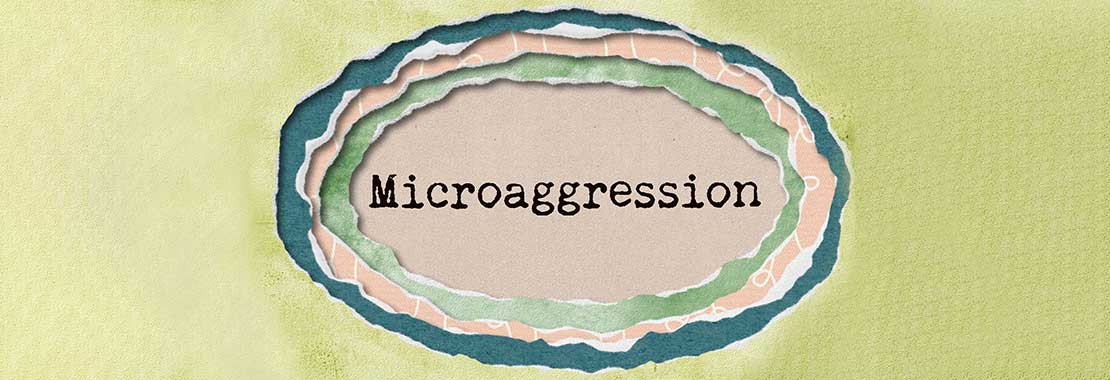Article Summary
- Microaggressions are instances of indirect, subtle or unintentional discrimination against members of a marginalized group|Microaggressions can cause serious harm to students and create an unsafe or hostile learning environment |Instructors must educate themselves on the history of racism and microaggressions to foster an inclusive and equitable classroom
- field_5cf83622ba22e
Dr. Cherly Gary-Furdge is a Professor of Criminal Justice and Sociology at North Central Texas College
Microaggressions in education are damaging to students and can often create a hostile learning environment. A few years into working in higher education, I received a phone call from several students about a comment an instructor made in class. The complaints not only came from Black students, but also students of other races. The instructor said that “The Cosby show is a show that shows Black people trying to live like white people.”
I first tried to understand the context of the statement in the class’s Criminal Justice curriculum. After thinking it over, I still could not make sense of the comment. I had a visit with the instructor to discuss the complaint and understand what he was thinking. Needless to say, the instructor was very defensive and could not explain to me why he made the statement.
As the chair, I had to do damage control. Many students, especially Black students, were ready to leave the class. They automatically felt the instructor was a racist and could no longer trust him.
What is a Microaggression?
The statement above is a prime example of a microaggression. A microaggression is a statement, action or incident regarded as an instance of indirect, subtle or unintentional discrimination against members of a marginalized group, such as a racial or ethnic minority. In this instance, the instructor’s statement told the students of color in the class that when they try to live a certain way, they are trying to “live like white people.”
In their book “Subtle Acts of Exclusion: How to Understand, Identify, and Stop Microaggressions,” authors Tiffany Jana and Michael Baran also use the phrase “subtle acts of exclusion” to describe microaggressions. However, we must understand that calling these acts “subtle” or “microaggressions” does not mean they are small. It means that they are sometimes so subtle that people don’t even know they are committing the act. For example, saying to a Black person, “For a Black person, you sure do speak well,” is a microaggression because it insinuates that Black people should not speak “well.”
Jana and Baran give the benefit of the doubt and claim that people who make these statements do not understand the impact of their words. I, on the other hand, feel that in a contemporary environment, most people know exactly what they are saying. However, they do not believe they will be held accountable for it.
Who Experiences Microaggressions?
Microaggressions can happen to anyone. However, they more often happen to marginalized populations; Black and brown people, LGBTQIA+ people, women and other non-white people. Think about the racist way in which the previous President talked about COVID-19 with respect to Asian Americans. During this same time, microaggressions against Asian Americans increased sharply, according to a study from the University of Nevada, Las Vegas. Those who perpetuated his racist rhetoric through microaggressions, on top of hate crimes and violence, impacted the Asian community in a very harmful way.
Why is Understanding History and Language Key?
Knowing history is essential to identifying and eliminating microaggressions in education. For example, a friend called me one day furious after picking her son up from daycare. When her little boy got in the car, he had a plastic toy banana. Innocently, the little boy said, “Mom, look what my teacher gave me!” The little boy was Black and his teacher was white.
Of course, the mom went back in the school to ask the teacher why. The teacher stated that she wanted to give him a toy, and thought the banana was perfect. The teacher gave no other children in the class a toy—just this little boy.
This is a subtle act of exclusion, and a great example of why learning the history of racism and language is so important to avoid microaggressions. Historically, Black people were compared to “monkeys” by white people. For a white teacher to give a Black child a banana sends a strong message rooted in this racist history. If you are still asking yourself what’s wrong with this, you should dig far deeper and learn far more about microaggressions.
Why is Understanding Microaggressions in Education Important?
The main thing I want readers to know is that it is very important to pay attention, listen, research and ask questions about microaggressions in education. It is vital that educators dive into this topic to be mindful of the things we say around, and to, our students.
Think back to my previous stories. As an educator, what are your thoughts? Do you understand why the students and parents were upset and offended? These stories show how we can lose students and cause them harm with microaggressions. Any form of racism, intentional or not, can cause major harm. Therefore, if we want to serve our very diverse population of students, it is very important that we as educators educate ourselves on how to ensure we are helpful and not harmful.
We also need to understand the difference between Diversity, Equity and Inclusion (DEI) and Critical Race Theory, and how schools blocking discussions of racism prevent important conversations from being had. By welcoming honest conversations about microaggressions, racism and equity instead, educators can make a positive impact on their students and prepare them with the tools to build a better, more inclusive future.
Learn More
For more information on building an inclusive classroom, explore our Empowered Educator event: DEI&B in the Classroom: Higher Ed Faculty Training.




